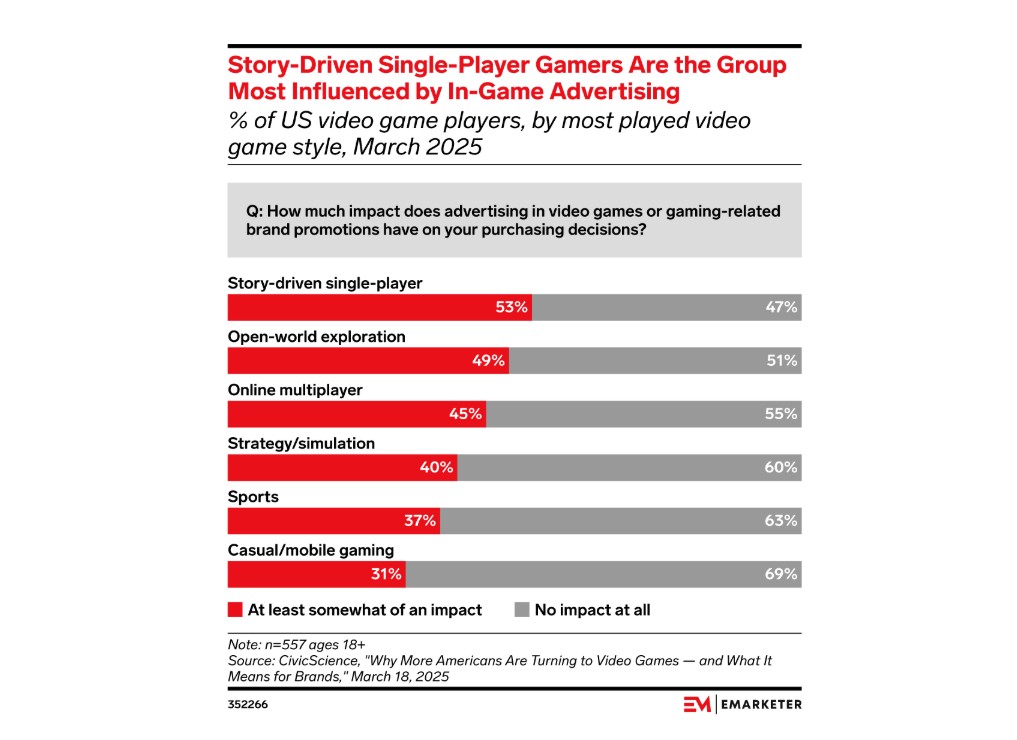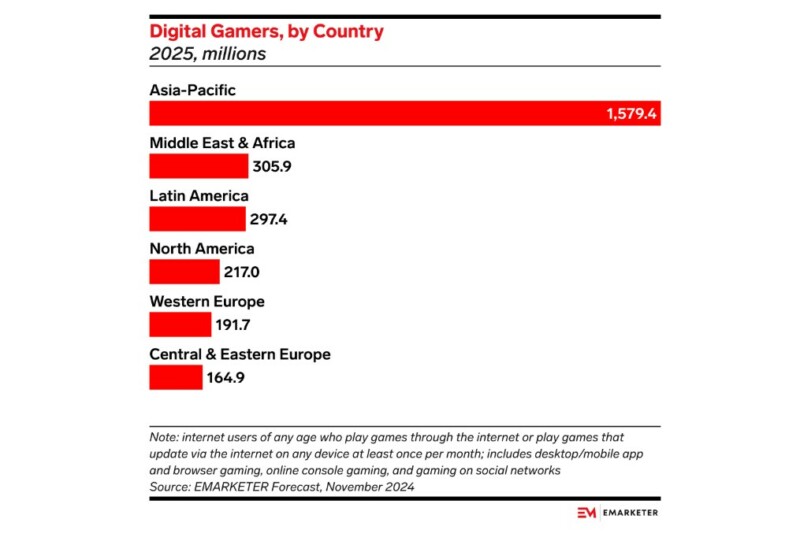The Growing Influence of In-Game Ads
Gaming has never been more popular, with digital gaming reaching an all-time high in the U.S. and a global player base growing yearly. This surge in engagement presents a massive opportunity for advertisers looking to connect with consumers in a highly immersive environment. According to a recent CivicScience survey and the results published by EMARKETER, 14% of consumers discover new brands and products through in-game advertisements in video and mobile games.
However, the effectiveness of in-game advertising depends mainly on the type of game and how ads are integrated. Marketers need to be strategic in their approach to ensure ads enhance rather than disrupt the gaming experience.
Generational Preferences in Gaming and Ad Engagement
Different age groups engage with video games in distinct ways, impacting how they respond to in-game ads:
- Gen Z plays the widest variety of games, with strong engagement in story-driven single-player games (30%), open-world exploration games (20%), online multiplayer (26%), and casual/mobile games (18%).
- Millennials favour casual/mobile games but engage with sports games more than any other generation.
- Gen X (56%) and Baby Boomers (69%) primarily play casual/mobile games, making them less receptive to ads interrupting their gameplay.
The Impact of In-Game Ads on Purchase Decisions
The effectiveness of in-game advertising is greatly affected by the genre and format of the game.
- Casual/Mobile Gamers: 69% of players in this category report that in-game ads do not impact purchase decisions. Many skip interstitial ads or restart the game to avoid interruptions.
- Story-Driven and Open-World Gamers: These players show a higher engagement rate with in-game ads:
- 53% of story-driven single-player gamers say ads influence their purchase decisions.
- 49% of open-world gamers report that in-game advertising impacts their buying behaviour.

Best Practices for In-Game Advertising Success
Marketers need to adapt their ad strategies to maximize engagement and ROI. Here are key takeaways for effective in-game advertising:
1. Avoid Intrusive Ads for Casual Gamers
Casual and mobile gamers tend to skip ads quickly. Traditional interstitial ads can be frustrating, leading users to close and restart apps to avoid them. Instead, advertisers should consider opt-in video ads that offer in-game rewards, making engagement voluntary and valuable.
2. Leverage In-Game Billboards in Open-World & Story-Driven Games
Unlike casual gamers, open-world and story-driven players are more receptive to ads that are seamlessly integrated into the gaming environment. Virtual billboards, product placements, and branded experiences within these games can enhance immersion without disrupting gameplay.
3. Strategic Brand Partnerships with High-Impact Games
Since in-game ads most influence story-driven and open-world gamers, brands should partner with these game developers to ensure high-quality ad placements. This could include:
- Sponsored missions or quests featuring brand messaging.
- Branded in-game assets that enhance the gaming experience.
- Product placements that align with the game’s narrative.
The Global Opportunity for In-Game Advertising
The global gaming market continues to grow, with the Asia-Pacific region set to account for 57% of worldwide gamers by 2025. China and India lead the market with over 1 billion gamers combined, but the Middle East and Africa are experiencing the fastest growth.

With digital gaming now a mainstream activity, advertisers have a unique opportunity to reach consumers in an engaged, interactive environment. AdTonos can serve nearly 700 million audio ads in mobile games monthly, demonstrating the vast potential of this space.
Gaming offers advertisers a dynamic and rapidly evolving platform. However, not all in-game ads are created equal. To connect with gamers, brands must understand their audience, choose the proper game formats, and deliver non-intrusive and engaging ads. Marketers can maximize their ROI and brand impact in this ever-growing digital landscape by leveraging strategic ad placements in open-world and story-driven games.
Source: EMARKETER website.



